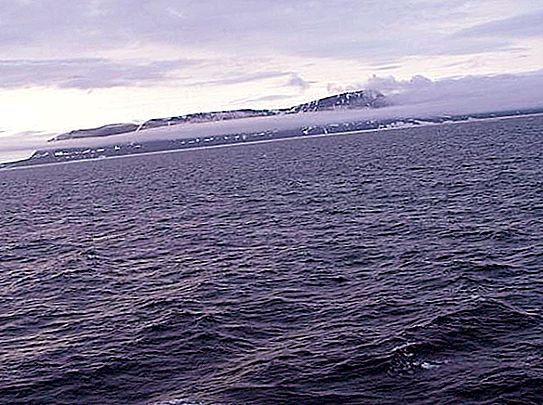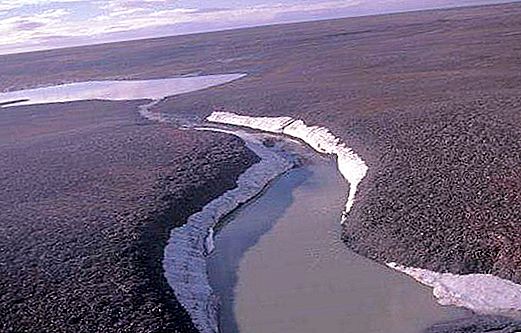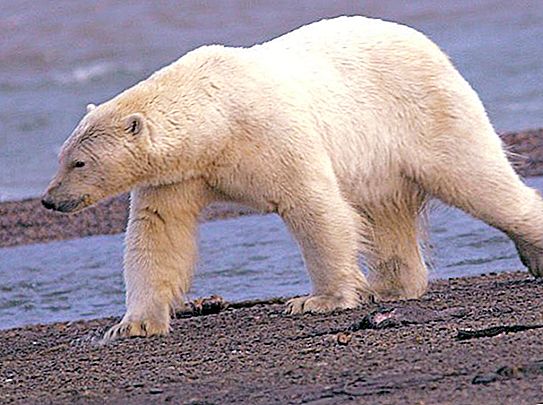In the Arctic Ocean lies the archipelago of Severnaya Zemlya. It consists of four large islands and many small ones. The article describes the second largest island of the archipelago - Bolshevik. It is the southern tip of Severnaya Zemlya, washed immediately by two seas - Kara and Laptev. It is separated from the mainland by the Vilkitsky Strait, and from the island of the October Revolution - by the Shokalsky Strait.
Geographic data

The Bolshevik island has an area of 11 thousand 312 square meters. kilometers, which is almost a third of the entire archipelago. Its highest point is at 935 meters. The relief of the island is predominantly flat with small hills, sometimes turning in elevation.
The coordinates of this territory: 78 degrees 36 minutes north latitude and 102 degrees 55 minutes east longitude. Now you know exactly where the Bolshevik island is located.
Its coastline is severely indented, there are many bays. The most significant is Akhmatova Bay, which crashes into land for almost 60 km. They also penetrate deep into the islands of the Telman fjord and Mikoyan Bay. Along the coastline there are many bays - Zhuravleva, Solnechnaya and others.
The Bolshevik island boasts a large number of rivers - Studenaya, Kamenka, Golysheva, Abyvistaya and others, but there are few lakes here and they are all not large.
Climatic conditions

The climate here is arctic marine. For many years, the average annual temperature has been around -14 … -16 ° C, while in winter it can drop to -40 ° C, in the summer it rarely rises above + 5 ° C. Precipitation falls a little - up to 400 mm per year, mainly from June to August. Even in summer, the soil thaws only on the surface, a little deeper (at the level of 12-15 centimeters) the ground was frozen by permafrost. Area over 3 thousand square meters. kilometers (30% of the entire island) are covered by glaciers that never melt. The largest of them even got names - Leningradsky, Kropotkin, Mushketov.
Given the low temperature, frequent heavy winds and other adverse conditions, it becomes clear why the island of Bolshevik is uninhabited. The weather here is very bad for most of the year.
Flora and fauna

Despite the extremely harsh climate, the Bolshevik island is still inhabited. There are many birds nesting on the hills. These are mainly silver and pink seagulls, guillemots, common winter kittens, burgomaster, and also such rare species as peregrine falcon, white-tailed gull and white gull.
Walruses and seals are established on the island. Sometimes you can meet reindeers, lemmings, wolves and arctic foxes. But the owner of this island, like the entire archipelago, is a polar bear. Excavations showed that about 25 thousand years ago mammoths lived here.
According to biologists, about 65 species of plants grow on Bolshevik, that is, extremely sparse vegetation on the island. Mosses and lichens survive here, covering stones with almost continuous cover, as well as polar willow. Flowering ones are rare - polar poppy, cinquefoil, saxifrage saxifrage, saxifrage snowy, minnarum large-fruited, bluegrass shortened, saxifraga drooping, tangled tang and some other species. Of the cereals on the island, a gray pike and an alpine foxtail grow.
The main characteristic of the local flora is the strong thinness of the vegetation cover, the main reason for which is rockiness and graveliness for the plains and elevations of the island, which is described in the article.
Nearby small islands
Within a radius of several kilometers from Bolshevik there are more than 20 small islands. The most significant of them is called Excess. The rest - Low, Forgotten, Athletic, Wedge, Sharp, Close, Marine and several others - have a small area. All of them are united by a hilly-flat rocky relief, harsh climatic conditions, poor fauna and extremely scarce flora.




